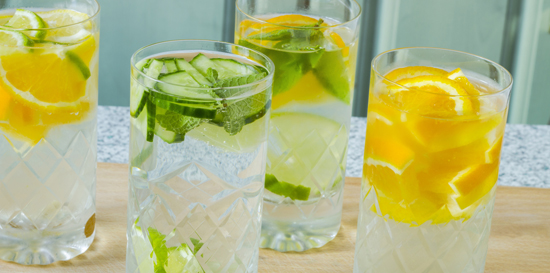It’s definitely summer in Seattle, and temperatures are forecasted to stay in the 80s for the next week. It’s hot out there, y’all!
Whether you have children home for the summer, are running from errand to errand in the heat of the late afternoon, or are just looking for a refreshing way to relax and enjoy the summer – here are some exciting new snack ideas to keep you and your family happy, healthy and hydrated!
Enjoy!
Greek Yogurt Blood Orange “Creamsicle” Smoothie
Serves 2
1 cup of Stonyfield Organic Nonfat Greek Yogurt
2 whole, peeled blood oranges
Zest of 1 blood orange (optional)
1 Tbsp organic raw honey
½ cup frozen mango chunks
4 ice cubes
Directions: Combine all ingredients and blend on high.
~
Frozen Fruit Kabobs
Wooden Skewers
Grapes
Strawberries
Bananas
Melted chocolate
Directions: Skewer the fruit and drizzle with chocolate. Freeze on a baking sheet for 1-2 hours or until frozen.
~
Fruit-Infused Waters
Benefits: Hydration. Hydration. Hydration. With a less-than-reliable thirst mechanism in later years, it’s common for water reserve to drop too low.
Directions: Clean and slice up to 1 cup of any of your favorite seasonal fruits or veggies and add them, along with a few sprigs of fresh herbs, to a 1-quart pitcher. Fill with water and let steep in the refrigerator for two hours or longer. Serve as is, or strain out fruit mixture. Try, say, a strawberry-lime-cucumber water: Slice 12 large strawberries, one lime and one-fourth of a cucumber; add a few fresh crushed mint leaves along with ice and water and let steep. Note: For stronger flavors, muddle or crush fruits and herbs.


